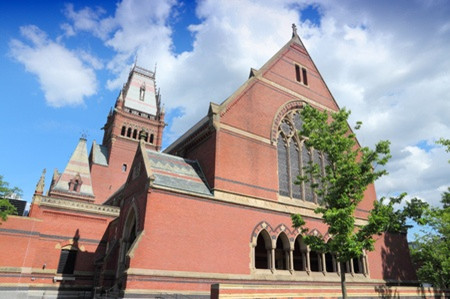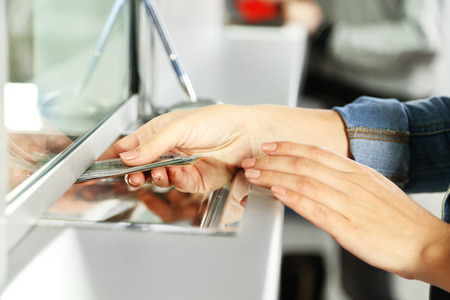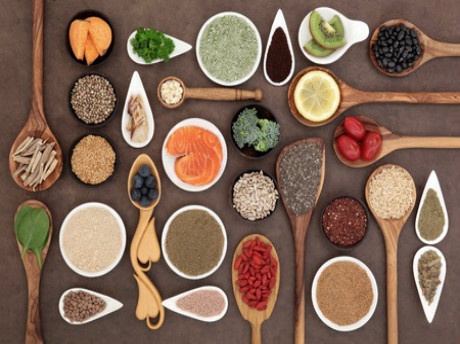新SAT阅读必备名人演讲:Gary Lauder's new traffic sign: Take Turns
- 2017年07月18日13:35 来源:互联网
- 参与(0) 阅读(4802)
新SAT必读演讲:Gary Lauder's new traffic sign: Take Turns.文中附有翻译讲解,欢迎大家学习。
今日名人
Gary Lauder
Gary Lauder is the managing partner of Lauder Partners, a VC firm, and the co-creator of the Socrates Society at the Aspen Institute.
Why you should listen
Gary Lauder is the Managing Partner of Lauder Partners LLC, a Silicon Valley-based venture capital firm investing primarily in information technologies. He has been a venture capitalist since 1985, investing in some 60 private companies. He is also chair of ActiveVideo Networks, a developer of interactive television technology for cable, IPTV and other forms of internet delivery. Other directorships: Promptu, MediaFriends and ShotSpotter. Investments are primarily in television/IPTV technology and web arenas.
He is the co-creator of the Aspen Institute's Socrates Society with Laura, his wife. He has had a working cable modem (usually) in his home since 1994. He is co-inventor of 10 patents, has spoken at some 80 industry forums, and, since 1992, has published several articles about the future of the cable industry ... that he still stands by.
What others say
“I do like the mention of "if cars are waiting please alternate". Politeness surely can't hurt!” — Pierre Mol, blog.ted.com
新SAT必读演讲英语字幕
00:15
I only have three minutes so I'm going to have to talk fast, and it will use up your spare mental cycles, so multitasking may be hard. So, 27 years ago I got a traffic ticket that got me thinking. I've had some time to think it over. And energy efficiency is more than just about the vehicle -- it's also about the road.
00:35
Road design makes a difference, particularly intersections, of which there are two types: signalized and unsignalized, which means stop signs. Fifty percent of crashes happen at intersections. Roundabouts are much better. A study of 24 intersections has found crashes drop 40 percent from when you convert a traffic light into a roundabout. Injury crashes have dropped 76 percent, fatal crashes down 90 percent. But that's just safety. What about time and gas? So, traffic keeps flowing, so that means less braking, which means less accelerating, less gas and less pollution, less time wasted, and that partly accounts for Europe's better efficiency than we have in the United States.
01:13
So, unsignalized intersections, meaning stop signs, they save many lives, but there's an excessive proliferation of them. Small roundabouts are starting to appear. This is one in my neighborhood. And they are much better -- better than traffic lights, better than four-way stop signs. They're expensive to install, but they are more expensive not to. So, we should look at that.
01:33
But they are not applicable in all situations. So, take, for example, the three-way intersection. So, it's logical that you'd have one there, on the minor road entering the major. But the other two are somewhat questionable. So, here's one. There's another one which I studied. Cars rarely appear on that third road.
01:49
And so, the question is, what does that cost us? That intersection I looked at had about 3,000 cars per day in each direction, and so that's two ounces of gas to accelerate out of. That's five cents each, and times 3,000 cars per day, that's $51,000 per year. That's just the gasoline cost. There is also pollution,wear on the car, and time. What's that time worth? Well, at 10 seconds per 3,000 cars, that's 8.3 hours per day. The average wage in the U.S. is $20 an hour. That is 60,000 per year. Add that together with the gas, and it's $112,000 per year, just for that sign in each direction.
02:21
Discount that back to the present, at five percent: over two million dollars for a stop sign, in each direction. Now, if you look at what that adjacent property is worth, you could actually buy the property,cut down the shrubbery to improve the sight line, and then sell it off again. And you'd still come out ahead. So, it makes one wonder, "Why is it there?" I mean, why is there that stop sign in each direction? Because it is saving lives. So, is there a better way to accomplish that goal?
02:50
The answer is to enable cars to come in from that side road safely. Because there are a lot of people who might live up there and if they're waiting forever a long queue could form because the cars aren't slowing down on the main road. Can that be accomplished with existing signs? So, there is a long history of stop signs and yield signs. Stop signs were invented in 1915, yield signs in 1950. But that's all we got.
03:11
So, why not use a yield sign? Well the meaning of yield is: You must yield the right-of-way. That means that if there are five cars waiting, you have to wait till they all go, then you go. It lacks the notion of alternating, or taking turns, and it's always on the minor road, allowing the major one to have primacy.So, it's hard to create a new meaning for the existing sign. You couldn't suddenly tell everyone, "OK, remember what you used to do at yield signs? Now do something different." That would not work.
03:34
So, what the world needs now is a new type of sign. (Applause) So, you'd have a little instruction below it, you know, for those who didn't see the public service announcements. And it merges the stop sign and yield signs. It's kind of shaped like a T, as in taking turns. And uncertainty results in caution. When people come to an unfamiliar situation they don't know how to deal with they slow down.
03:59
So, now that you are all "Road Scholars" ... (Laughter) don't wait for that sign to be adopted, these things don't change quickly. But you all are members of communities, and you can exercise your community influence to create more sensible traffic flows. And you can have more impact on the environment just getting your neighborhood to change these things than by changing your vehicle. Thank you very much. (Applause)
新SAT必读演讲参考翻译
00:15
我只有三分钟 所以我得说快点 这有点劳神,因为一心多用挺累人的 我于27年前收到一张罚款单 这使我陷入沉思 我想了又想 节约能源不单是 改造交通工具的问题 也是改造道路问题
00:35
道路设计,尤其是交叉路口设计尤为重要 交叉路口无非就两种:有交通信号灯的路口 和没交通信号灯但有路标的路口 近一半的事故发生在没交通信号灯的路口 环状交叉路的情况好一些 研究表明 当被测的24个交叉路口在改造成环状交叉路后 车祸事故发生率下降了40% 伤亡事故率下降了76% 恶性致命事故率下降了90% 不过这只是从安全角度考虑 时间和燃油呢? 只要交通流畅,司机就不会踩急刹车 也就不会加速,也就不会浪费燃油污染环境 也不会浪费时间 欧洲就是这样提高能源效率的 他们比美国做的好
01:13
没信号灯的交叉路口 只有信号牌,这可事关人命 但于欧洲,信号牌可是成倍的增长 小型环状交叉路也开始出现 这是我住的小区 这些环状交叉路可比信号灯和指示牌好使多了 但价格却不菲 要是没有它们,我们会损失惨重,所以还是考虑一下吧
01:33
但不是所有路口都可以改造成环状交叉路 譬如说,三岔路 在次干道和主干道交会处安装 三岔路是明智之举但对于另外两个次干道来说这方法不怎么可行 我研究过这个 车辆很少会从第三个路口开过来
01:49
这意味着什么呢? 我研究的交叉路口每天各个方向大约有 3000辆车驶过 每踩一次油门会多消耗2盎司燃油每盎司耗费5美分,那么每天3000辆车 那每年就多花费51000美元 这只不过是油钱,我还没算 车排放的尾气和浪费的时间 那到底浪费了多少时间呢 每一辆车要耗费10秒钟,3000辆车就是-- 每天八个半小时 美国平均每小时工资为20美元,年工资是6万美元 再加上油钱就是11万2千美元 这就是交通路标的耗资
02:21
再加上近年来的5%的通货膨胀 总额超过200万 这就是在每个方向安装一个路标的成本 再看看路口周围的地价 你基本上可以拿这200万买下周围的地皮 砍掉灌木丛开阔一下视野 然后转手卖出 还小有盈利 我们不禁想:为什么? 为什么要在每个方向装路标呢? 因为救人要紧。那有没有更好的方法呢?
02:50
答案就是确保车辆 安全地从另一边驶出 因为那边有很多住户 车多了难免会排成一条长龙 因为主干道上的车速较快 现有的条件下能做到这一点吗? 交通路标的历史悠久 标志“停”于1915年问世 标志“让”出现在1950年。我们就只有这两种路标
03:11
为什么不用“让”呢? 因为“让”意味着离开主线 就是说,要有5辆车等,你也得等 直到那5辆车开了,你才能走, 没什么换道啊,转弯啊 通常主干道有 优先权 所以,现行的交通指示牌很难衍生出新意思 没人能突然宣布: 看到“让”是不要“让” 这可不行
03:34
所以我们需要的是 新型信号 (鼓掌) 对于那些不看公共服务告示的人 新型路标下面还带有指示是“停”和“让”的综合体 是"T"字形的 司机一旦不确定,就会提高警惕 人们在不熟悉的环境下不确定时 会减速慢行
03:59
那大家现在都是道路专家了 (笑) 但别指望这会很快实现,这个过程总是漫长的 作为社区的一员 每人都有义务 确保交通的合理顺畅 你我皆能为环境保护作出贡献 只需以身作则,影响身边的人 大家一起行动来改善交通工具吧。谢谢 (鼓掌)

























